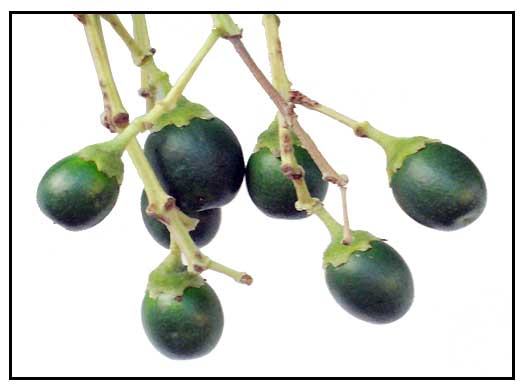Philippine islands provide habitats for all manner of flowers, herbs, bushes, and trees, including many endangered flora species.
Quoted from WorldAtlas.com. Philippine islands provide habitats for a variety of flowering plants, herbs, bushes, and trees, including many endangered flora. The country’s archipelago offers the best habitats for the growth of some of the unique flora on the planet. The mountains in the Philippines provide growing conditions for terrestrial Highlanders like the Nepenthes attenboroughii. Cinnamomum mercadoi grows best in the Philippines forest with mild and stable temperatures. The country also supports the growth of many endemic plant species like Tectona philippinensis.
Philippine Teak (Tectona philippinensis)
Philippine Teak (Tectona philippinensis) belongs to the Verbenaceae family. The species rises to a height of 15-25 meters with elliptic-ovate lanceolata with rough surfaces, pale underside and light greenish on top.The blooms are bright purple. It produces hairy drupe fruits about 13 cm long. It has a distinctive brown and flaky bark. The species is native to the provinces of Lobo, San Juan municipalities, and Batangas in Luzon Island and Occidental Mindoro, Katayungan, and Baclayon barangays on Iling Island. It prefers coastal to lowland limestone forests. It dominates the semi-deciduous forests.

The species is critically endangered, and presently small populations remain in patches in the Molave Forest in Lobo. The conversion of Tectona philippinensis habits into farmlands, logging of young trees and urban exploitation continue to threaten its survival. None of the areas where the Philippine teak grows is under any form of legal protection. However, there are attempts from the Fauna and Flora International to fund a recovery program for the species led by Philippine National Museum in Manila.
Attenborough's Pitcher Plant (Nepenthes attenboroughii)
Attenborough's Pitcher Plant is a carnivorous pitcher plant native to the Victoria massif of Palawan. It has an altitudinal range of 1450 m to 1726 m above sea level. Nepenthes attenboroughii is a terrestrial scrambling or upright plant with a height of 1.5 meters. The leaves are sub-petiolate or coriaceous and sessile. The species grow on nickel/magnesium-rich ultramafic soil and mainly in high altitudes shrublands. The Attenborough's Pitcher Plant is dioecious with a slight male bias.

Plant poaching is thus a detrimental against this species since the reproduction to take place both sexes must be present. The World Conservation Union (IUCN) classifies the plant as Critically Endangered for its restricted distribution and plant poaching. There is no conservative measure for the pitcher plant, and the plant growth areas are not listed as protected areas. Mining occurs at the base of Mount Victoria. However, there is some form of protecting derived from the Conservation on International Trade in Endangered Species which protects all plants in the genus Nepenthes.
Kalingag (Cinnamomum mercadoi)
Kalingag (Cinnamomum mercadoi) belongs to the Lauraceae family. The plant species is native to the Philippines growing in the forests at about 300 to 700 meters and sometimes high elevations of about 2,000 meters. The species grows best in subtropical and medium temperate forest conditions with high humidity and stable mild temperatures.

The fruit-specialized hornbill disperses the seed distributing the species across the island. The leaves are simple, sub-opposite or opposite, with a pale green background.It has smooth and rarely exerted petals. Corky pustules cover the bark giving it a slightly rough appearance. The flowers are greenish-yellowish. The fruits are smooth and shiny with elliptic-shaped soft seeds.The consecutive loss of forests in the Philippines and overharvesting of the Cinnamon plants makes it a vulnerable species according to the IUCN.
Copeland's Pitcher Plant (Nepenthes copelandii)
Copeland's Pitcher Plant is plant species native to Mindanao in the Philippines. It also grows in Mount Apo, Davao City, Mount Pasian, and Camiguin. Its attitude ranges from 1100–2400 m above sea level and has no known plant hybrids and varieties.

The species produces copious long, elegant, and vividly colored pitchers. It has winged petioles, lids with upper peaches broadest at the base, and the lower side has basal ridges that often elaborate into appendages. The species altitude range is 1100–2400 m above sea level. In Mount Apo, the Copeland's Pitcher Plant has been cultivated since the early 1980s. As such IUCN does not classify the pitches plant as endangered and no conservation is needed.
Conclusion
These plant species have a lot of economic importance and also ecological. The species grow and bloom in the same biotype as the forests adapting to the environmental conditions of the area. Since most of the Philippines land is not under legal protection, the endemic species face similar threats as forests agriculture, urban extension, development, and illegal logging. As such the country should lay down conservative measures to protect the native flora from human exploitation.
Native Plants Of The Philippines
| Native Plants of the Philippines | Scientific Binomial Name |
|---|---|
| Copeland's Pitcher Plant | Nepenthes copelandii |
| Kalingag | Cinnamomum mercadoi |
| Ipot Palm | Areca ipot |
| Attenborough's Pitcher Plant | Nepenthes attenboroughii |
| Philippine Tung | Reutealis trisperma |
| Round-Leaf Fountain Palm | Saribus rotundifolius |
| Philippine teak | Tectona philippinensis |
| Cebu Cinnamon Tree | Cinnamomum cebuense |
| Balakat | Ziziphus talanai |
| Kris Plant | Alocasia sanderiana |



















